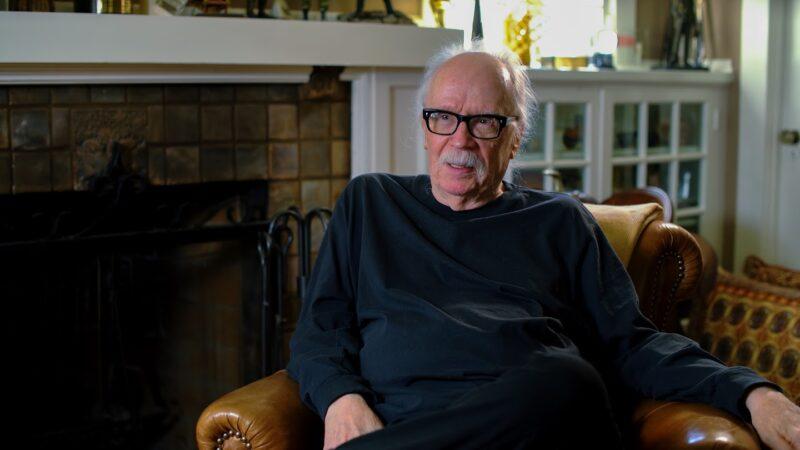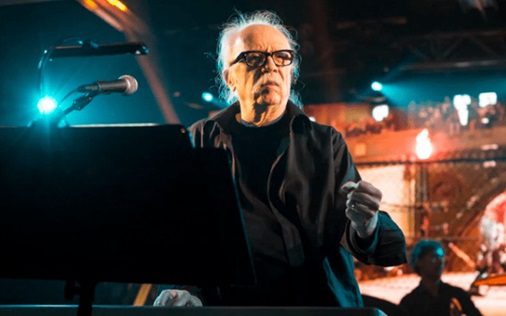If you follow horror, you surely already know who John Carpenter is. Still, let’s take a fresh look back at why he is revered by horror fans everywhere. John Carpenter is an acclaimed American filmmaker, screenwriter, and composer best known for his work in the horror, science fiction, and action genres. He also has been called “a creative genius of raw, fantastic, and spectacular emotions.”
His career spans several decades, and he has been recognized for his ability to create atmospheric films with memorable music and distinctive storytelling. Born John Howard Carpenter on January 16, 1948, in Carthage, New York, Carpenter attended the University of Southern California’s School of Cinematic Arts, where he studied filmmaking. He was fascinated by movies from a young age, drawing inspiration from directors like Howard Hawks and Alfred Hitchcock, as well as genres like westerns and science fiction.

Notable Works
Carpenter is widely regarded as a master of genre cinema, particularly in horror.
Halloween (1978): A landmark slasher film that established many tropes of the genre, including the pure virgin “final girl.” This film also introduced the world to the iconic character Michael Myers (AKA “The Shape”). Carpenter also composed the film’s chilling score, including its famous theme.
The Thing (1982): A tense and horrifying science fiction movie about monster-driven paranoia and survival in an Antarctic research station. Initially met with mixed reviews, it has since become a cult classic and is celebrated as one of the greatest horror films ever made.
It’s not your average, run-of-the-mill, Mickey Mouse horror film.
Escape from New York (1981): A dystopian and often crazy action film starring Kurt Russell as anti-hero Snake Plissken, it’s known for its gritty tone and innovative vision of a post-apocalyptic future.
They Live (1988): A satirical sci-fi film about consumerism, media control, and social inequality about a character who acquires sunglasses that lets him see space aliens around him who have disguised themselves as regular humans. “They Live” features the iconic line spoken by Roddy Piper: “I have come here to chew bubblegum and kick ass…and I’m all out of bubblegum.”
Music and Composing
Carpenter is also known for his minimalist and synth-driven film scores, often composing the music for his movies himself. His father was a music teacher who explained to him the music from “Peter and the Wolf”: “This is the heroic sound, and here comes the evil one.”
His musical style is influential in its own right and has inspired countless artists (Michael Jackson made the song “Thriller,” John Carpenter has made both music and thrilling films). In recent years, Carpenter has toured as a musician and released albums such as Lost Themes.
Impact
Carpenter’s films often received mixed reviews upon release but gained recognition over time, becoming cult classics. His work has had a profound influence on modern filmmakers, with directors like Quentin Tarantino, Guillermo del Toro, and Jordan Peele citing him as an inspiration, and any film maker (or music) that has potential could learn from him.
Carpenter is recognized for his ability to work on relatively low budgets while delivering high-impact storytelling and visuals (even if his stories are usually not the most complex, at least on the surface).
Later Career
In the 1990s and 2000s, Carpenter’s output slowed, but he continued to work sporadically on films, TV projects, and music. He has also been involved in advising on remakes and sequels of his earlier films, such as Halloween (2018), which he executive produced.
Fun Facts
Carpenter is a huge video game fan and often talks about how gaming inspires his creativity.
He has a recurring collaboration with actor Kurt Russell, who starred in several of Carpenter’s films.
His trademark use of practical effects has left a lasting mark on the industry, as practical effects often seem more real (because, well, they are sort if real).
In 2006, the original Halloween was preserved in the United States National Film Registry by the Library of Congress as being “culturally, historically, or aesthetically significant.”
 PopHorror Let's Get Scared
PopHorror Let's Get Scared




